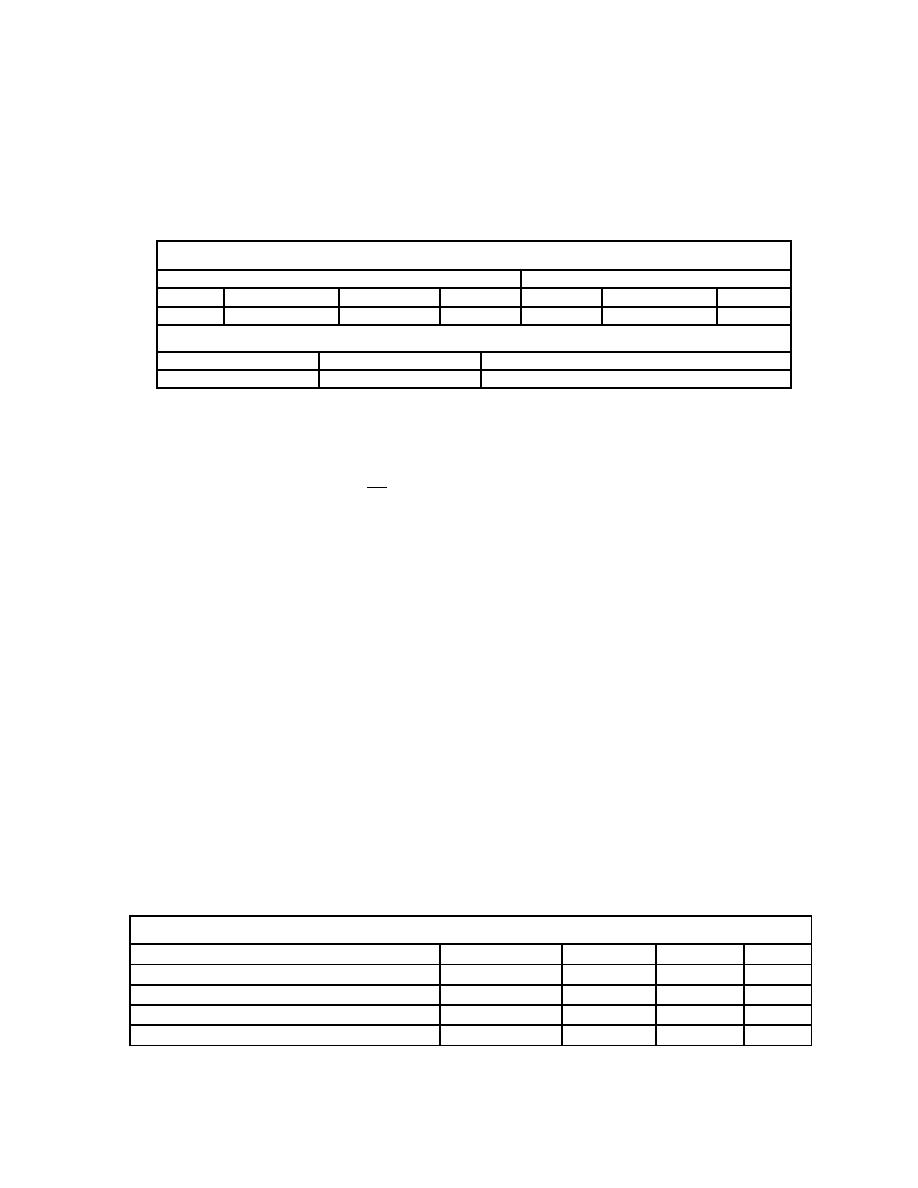
About 60 percent of the computed unit sediment discharge is 50 percent less than the
measured unit sediment discharge. Only 33 percent of computed qs are between 70 and 200
percent of measured qs and 7 percent of computed qs are greater than 200 percent of the
measured qs. Accordingly, the application of Equation B.5 for a wide variety of river data is
questionable, but not to the degree of several other widely utilized equations. The range of
hydraulic data and particle diameters included in this analysis is shown in Table B.7.
Table B.7. Range of Data Utilized by Posada to Develop Equation B.5.
Width (w)
Depth (d)
2
3
2
3
10 ≤w<10 m
< 20 m
20<w<10 m
>10 m
<1m
1m<d<3m
>3m
2.51%
6.03%
55.28%
36.18%
0.50%
10.05%
89.45%
Mean Bed Material Diameter
< 0.125 mm
0.125 0.250 mm
0.250 2.000 mm
5.88%
31.93%
77.39%
Table B.7 illustrates that Posada developed Equation B.5 for large rivers with mostly medium
to very coarse mean bed material (77.39 percent). Accordingly, the unit sediment discharges
computed by Equation B.5 fit quite well to measured values for those conditions. For
medium to very coarse sand bed rivers the discrepancy ratio between measured qs and
computed qs is 1.12. However, RD is only 0.33 for very fine to fine sand-bed rivers, it is 0.18
for silt-bed rivers and it is 312.46 for gravel-bed rivers.
B.3.4 Expanded Power Function Relationship
Considering the correlation coefficient for each variable of hydraulic geometry and the
sediment characteristics, Kodoatie (1999) modified the Posada (1995) equation (Section
B.3.3) using nonlinear optimization and the field data for different sizes of riverbed sediment.
The resulting equation is (variables are defined in Section 4.8.3):
qt = aV b y c S d
(B.6)
A summary of coefficients and exponents is presented in Table B.8 and depend on size of
bed material. The equation was developed with one group of data (Group 1) and validated
with another group of data (Group 2). Graphical comparisons for four bed material
categories are shown in Figures B.4 and B.5 for the two groups of data. Discrepancy ratios
and correlation coefficients based upon data from Groups 1 and 2 are shown in Tables B.9
and B.10. Comparisons between the Posada and Kodoatie et al. equations are also shown
on these tables. Note that the values of "a" must be adjusted for input and results in English
units (see Section 4.8.3).
Table B.8. Coefficients and Exponents for Equation B.6.
a
b
c
d
Silt-bed rivers
281.40
2.622
0.182
0
Very fine to fine-bed rivers
2,829.60
3.646
0.406
0.412
Medium to very coarse sand-bed rivers
2,123.40
3.300
0.468
0.613
Gravel-bed rivers
431,884.80
1.000
1.000
2.000
B.18



 Previous Page
Previous Page
